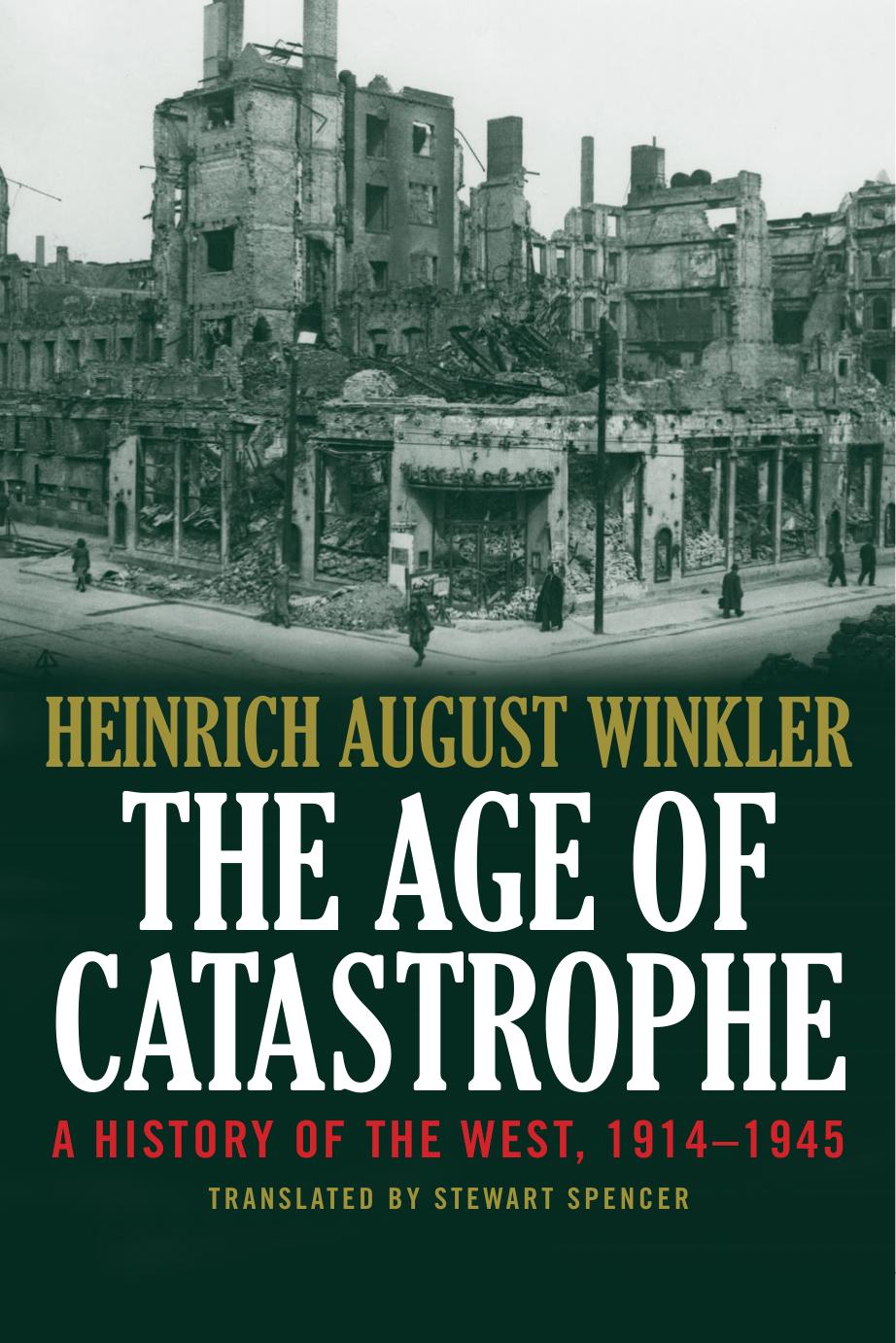The Age of Catastrophe: A History of the West 1914â1945 by Heinrich August Winkler

Author:Heinrich August Winkler
Language: eng
Format: mobi, pdf
Tags: Europe, 20th Century, Modern, Germany, World, History
ISBN: 9780300213096
Publisher: Yale University Press
Published: 2015-09-27T23:00:00+00:00
different regions and transferring their sovereign jurisdiction to the Reich itself. From then on the regional governments came under the jurisdiction of the federal government, while the regional governors were placed under the supervision of the minister of the interior. The result was a far-reaching change that marked the definitive victory of unitarian forces over their particularist counterpart.
The more powerful governors had little or no inclination to submit unconditionally to ministries in Berlin, and since they were repeatedly able to win over Hitler to their point of view, their opposition was by no means ineffectual. Hitler was in any case fixated on his ultimate goals and had no clear ideas on questions of internal government, with the result that he preferred to avoid having to take any decisions at all. In consequence he repeatedly frustrated tendencies that a National Socialist regime would logically have followed, notably the systematic centralization demanded by Wilhelm Frick at the Ministry of the Interior. But in a certain sense there was a method even to this lack of coherence, Hitlerâs policies being directed more at âmovementâ than at âorderâ, perpetual dynamics being impossible to reconcile with the formation of stable structures. Rivalries between his followers also had the advantage that he himself would have to be called on to arbitrate, and even if he took no decision, this still meant that he remained in charge of the game.
In his relations with the countryâs Christian Churches, Hitler likewise tried to present himself as the ultimate authority in the event of conflict. Papen, as his vice-chancellor, had largely been left to deal with relations between the Reich and the Catholic Church. The result was the Concordat which, signed in the Vatican on 20 July 1933, came into force on 10 September 1933. The Catholic Church was allowed to continue to regulate its own internal affairs and received an assurance from the state that it would be able to go on running faith schools, to teach religion and to organize Church societies, including youth groups. In return the Curia agreed that the Catholic clergy should no longer undertake any political activities. In this way the government had won a partial victory, for the political neutralization of the Catholic Church was necessary if the National Socialists were to reduce its ideological influence.
In Evangelical Germany, the National Socialists had already taken control of a number of powerful bastions even before 30 January 1933, although their influence was more widespread among local parishioners than among Church leaders, who were predominantly German Nationalist in their outlook. In the Prussian Church elections in November 1932 the National Socialist German Christian Faith Movement, which occasionally styled itself the âSA of Jesus Christâ and the âChurch SA, had already won one-third of the seats. In advance of the Evangelical Church elections in July 1933 Hitler - nominally still a Catholic - broadcast an appeal from Bayreuth, where he was attending that summerâs Wagner Festival, inviting his radio audience to vote for the Christian Faith Movement.
Download
The Age of Catastrophe: A History of the West 1914â1945 by Heinrich August Winkler.pdf
This site does not store any files on its server. We only index and link to content provided by other sites. Please contact the content providers to delete copyright contents if any and email us, we'll remove relevant links or contents immediately.
| Africa | Americas |
| Arctic & Antarctica | Asia |
| Australia & Oceania | Europe |
| Middle East | Russia |
| United States | World |
| Ancient Civilizations | Military |
| Historical Study & Educational Resources |
Magic and Divination in Early Islam by Emilie Savage-Smith;(1500)
Ambition and Desire: The Dangerous Life of Josephine Bonaparte by Kate Williams(1346)
Bohemians, Bootleggers, Flappers, and Swells: The Best of Early Vanity Fair by Bohemians Bootleggers Flappers & Swells- The Best of Early Vanity Fair (epub)(1344)
Papillon by Henry Charrière(1310)
Twelve Caesars by Mary Beard(1258)
Operation Vengeance: The Astonishing Aerial Ambush That Changed World War II by Dan Hampton(1137)
What Really Happened: The Death of Hitler by Robert J. Hutchinson(1131)
London in the Twentieth Century by Jerry White(1114)
Time of the Magicians by Wolfram Eilenberger(1089)
The Japanese by Christopher Harding(1086)
Twilight of the Gods by Ian W. Toll(1084)
Lenin: A Biography by Robert Service(1045)
The Devil You Know by Charles M. Blow(985)
A Social History of the Media by Peter Burke & Peter Burke(938)
Freemasons for Dummies by Hodapp Christopher;(923)
Napolean Hill Collection by Napoleon Hill(903)
Henry III by David Carpenter;(892)
The Churchill Complex by Ian Buruma(884)
The Rise and Triumph of the Modern Self by Unknown(880)
